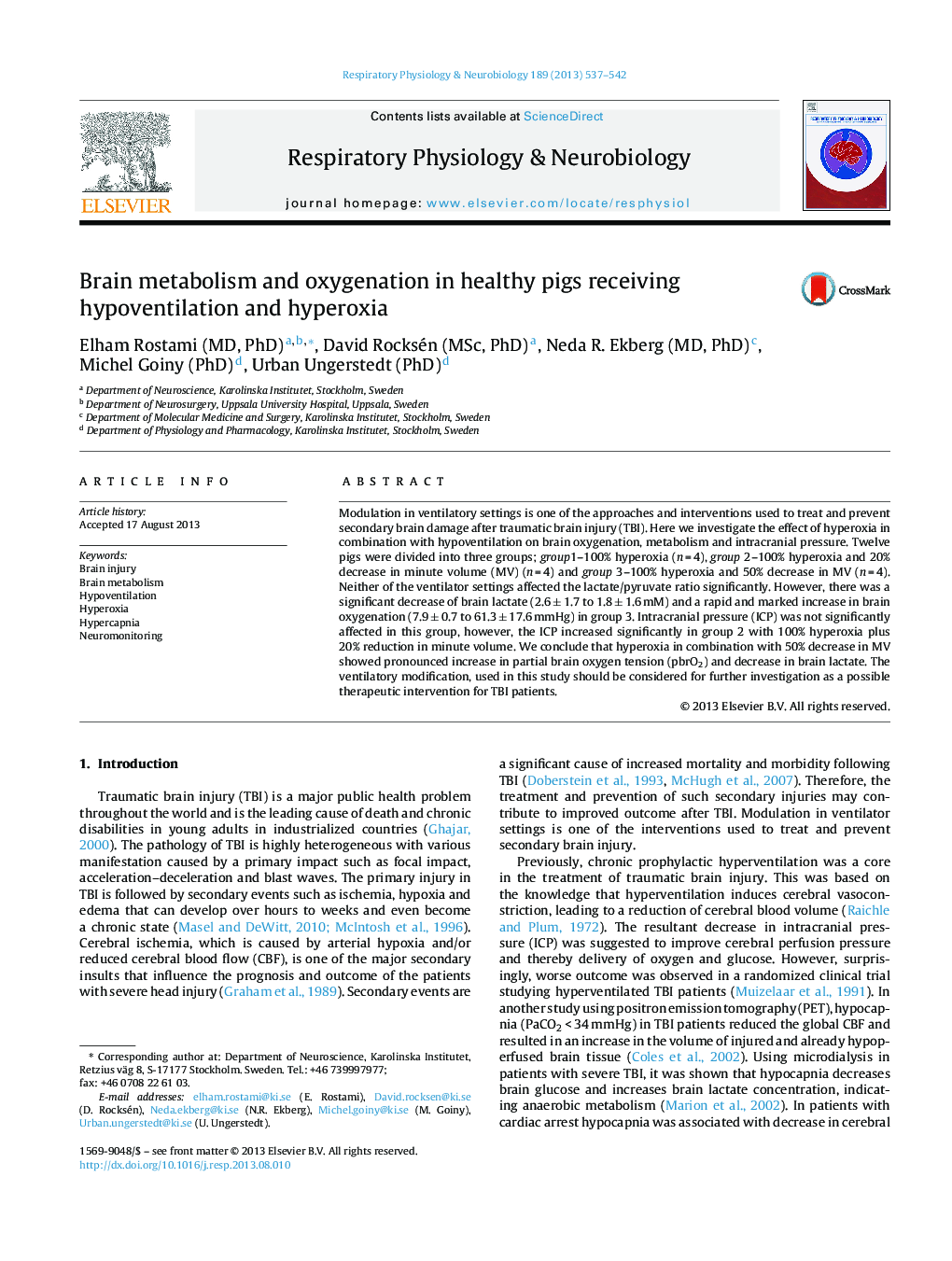| Article ID | Journal | Published Year | Pages | File Type |
|---|---|---|---|---|
| 5926048 | Respiratory Physiology & Neurobiology | 2013 | 6 Pages |
Abstract
Modulation in ventilatory settings is one of the approaches and interventions used to treat and prevent secondary brain damage after traumatic brain injury (TBI). Here we investigate the effect of hyperoxia in combination with hypoventilation on brain oxygenation, metabolism and intracranial pressure. Twelve pigs were divided into three groups; group1-100% hyperoxia (n = 4), group 2-100% hyperoxia and 20% decrease in minute volume (MV) (n = 4) and group 3-100% hyperoxia and 50% decrease in MV (n = 4). Neither of the ventilator settings affected the lactate/pyruvate ratio significantly. However, there was a significant decrease of brain lactate (2.6 ± 1.7 to 1.8 ± 1.6 mM) and a rapid and marked increase in brain oxygenation (7.9 ± 0.7 to 61.3 ± 17.6 mmHg) in group 3. Intracranial pressure (ICP) was not significantly affected in this group, however, the ICP increased significantly in group 2 with 100% hyperoxia plus 20% reduction in minute volume. We conclude that hyperoxia in combination with 50% decrease in MV showed pronounced increase in partial brain oxygen tension (pbrO2) and decrease in brain lactate. The ventilatory modification, used in this study should be considered for further investigation as a possible therapeutic intervention for TBI patients.
Related Topics
Life Sciences
Biochemistry, Genetics and Molecular Biology
Physiology
Authors
Elham MD, PhD, David MSc, PhD, Neda R. MD, PhD, Michel PhD, Urban PhD,
